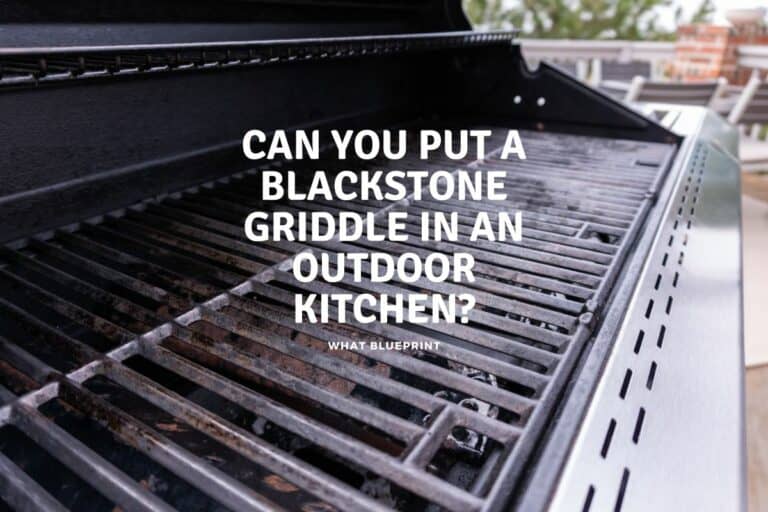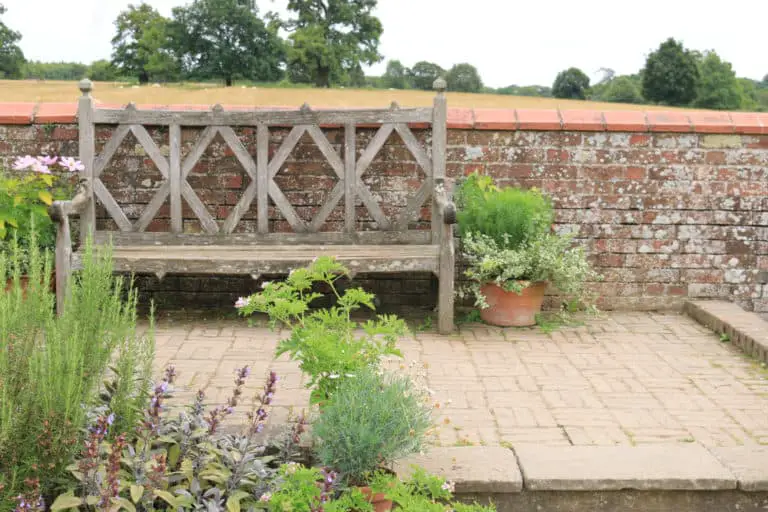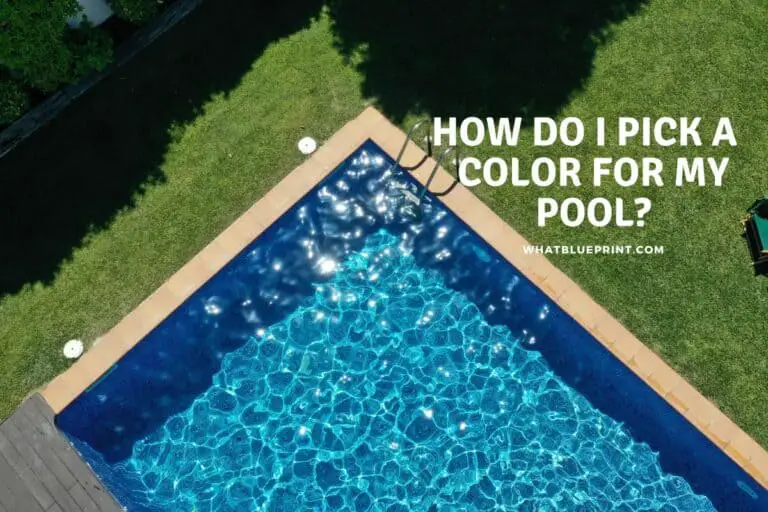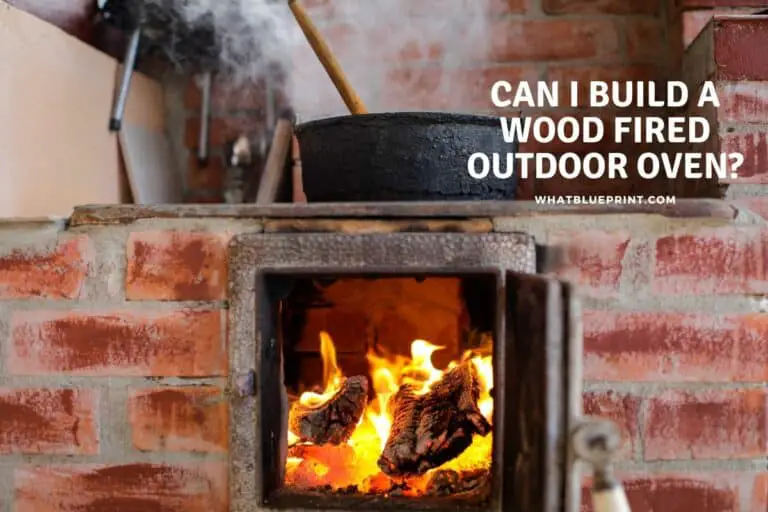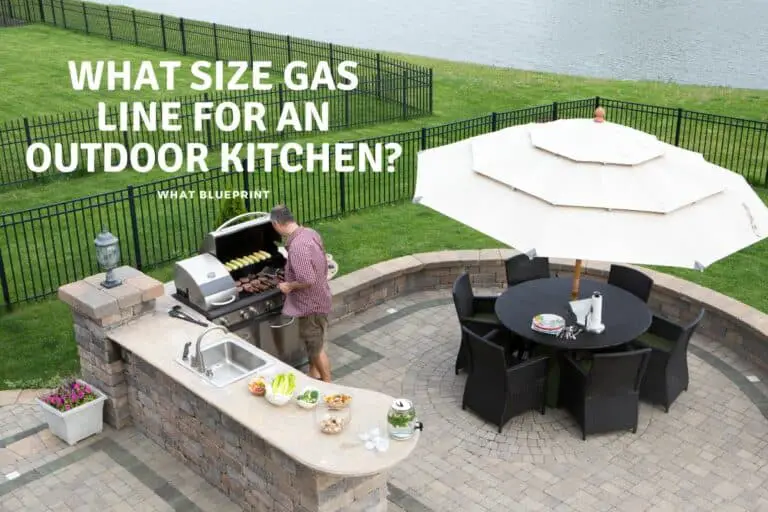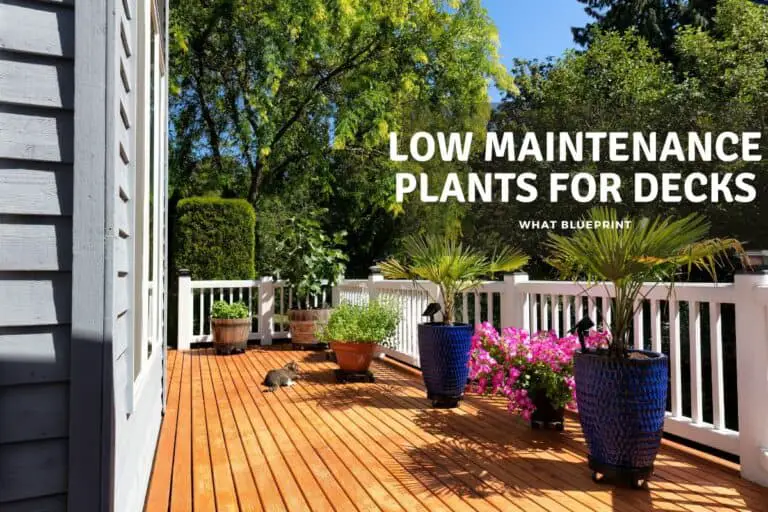Can You Grow Grass On A Balcony?
There is nothing more summery than green grass, but if you only have a small balcony and no backyard, it may feel grey and unfriendly. Is it possible to grow grass on a balcony?
It is possible to grow grass successfully on a balcony. Identifying the best-suited grass is crucial, as is constructing the correct foundation and drainage system. You can grow perennial or evergreen grasses like bluegrass, fescue, ryegrass, Zoysia, St Augustine, Bermuda, or Centipede.
With careful planning and a good sense of DIY basics, you can have a green patch on your balcony in no time. First, let’s see what you need to consider.
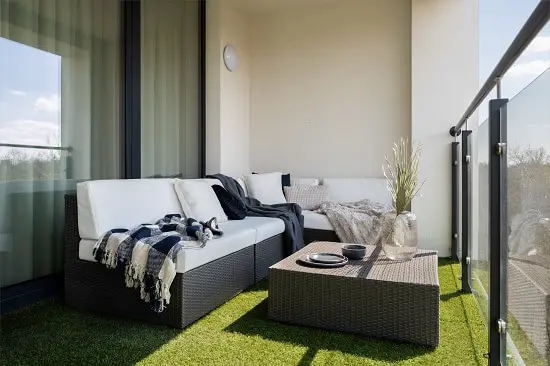
Can You Successfully Grow Grass On A Balcony?
Successfully growing grass on a balcony is possible if you make the necessary preparations. You must carefully plan the area and select the correct type of grass.
A balcony is not a common place to plant grass. Balconies are usually constructed from wood, screed cement, metal sheets, or tiles over cement. Planting grass is not typically done on a balcony, but here are some reasons you may consider –
- You have a small dog or cat that needs grass
- You want to create a garden-like environment
- If you have children, you can create a play area – not for animal use.
- You want to attract birds.
Not all grass types will be suitable to grow on a balcony. There are practical things to consider, such as
- Do you live in the North or South
- Is your balcony in direct sun all day?
- Is your balcony covered?
- Does it snow in winter?
- How much drainage will the grass have? ( we have more on this in the linked article.)
What Is The Easiest Way To Plant Grass On A Balcony?
Before you can plant grass, you need to look at the integrity of the balcony and the material used in its construction. You will have to cut the grass at some point, so you must use a trimmer or a hedge cutter because a lawnmower will be too big.
Other things to consider before planting grass on your balcony –
- If you are renting, what does your rental agreement say about improvements?
- Are you prepared to replace the balcony if it gets water damaged?
- Is there sufficient drainage available, or can you provide drainage?
It would be best not to plant natural grass on a wooden balcony but instead use fake grass. It is durable, relatively maintenance-free, and easy to clean and would not be a place where moss can grow. (how to remove moss from balconies can be found here)
How To Plant Grass Using Sods or Rolls
Step #1 – Clear Out And Clean The Balcony
Clean out the balcony so that you have enough space to work. Give the area you intend to transform a good cleaning and let it dry.
Demarcate the area using builder’s tape, make it slightly bigger than the planting area, and leave some extra space for the border.
Step #2 – Lay Builders Sheet And Piping
You can buy special drainage pipes from your garden center if you need to add extra drainage. Cover them with a hessian material to prevent soil from clogging them up.
If you are building a retainer area, you need to lay the builder’s sheet or plastic and place your drainage pipe where it needs to be.
If you use a container such as a molded playpen, drill a drainage hole and lay the drainage pipe inside. Now connect it to the hole, and lay the drainage to the nearest gutter point on the balcony.
Step #3 – Build The Border
After laying the sheet and piping, you can build the border with interlocking bricks, cinder blocks, or injection molded borders you can buy from a garden center.
Make sure there are no gaps to prevent sand and soil from spilling.
Step #4– Create The Drainage Substrate
The most crucial section beside the drainage pipe is your substrate materials. It is a good idea to cover the bottom layer in crusher/building stone, at least 15 to 19mm in size. Ensure it covers the drainage pipe and is at least 1 inch thick.
Cover the crushed stone with triple-washed, coarse building sand and compact the area well.
Step #5 – Add Compost And Topsoil
You can buy bags of soil from the garden center, making it easy to use on a balcony without the mess. It’s a good idea to mix top or potting soil with some manure and topsoil.
Good, nutrient-high soil will ensure the grass has a good start and help it grow faster. Grass roots need a minimum of 10-inches to thrive. With grass, more is better, so give it as much depth as possible.
Always compact the soil slightly and water it so that it can settle before you plant. Dry, hot soil can burn the roots and stunt the growth of the grass.
Step #6 – Plant The Sods Or Lay The Rolls
Now that your soil is ready and prepped, you can plant the sods in rows, or if you bought rolls of grass, you can roll them out and lightly compact them. Grass loves water, and you should immediately water it thoroughly.
Grass that gets a lot of sun will need more water. Watering three to four times a week should be sufficient, but if it is sweltering, you may need to water daily.
Wait at least 4 weeks before the first trim, allowing the grass to settle and the roots to flourish. Then, trim or cut as needed.
Step #7 – Fertilize Regularly
Grass loves nitrogen, potassium, and phosphate to grow. Therefore, it is recommended that you feed the patch of lawn once a month to every six weeks. Liquid fertilizer will work best on a balcony lawn.
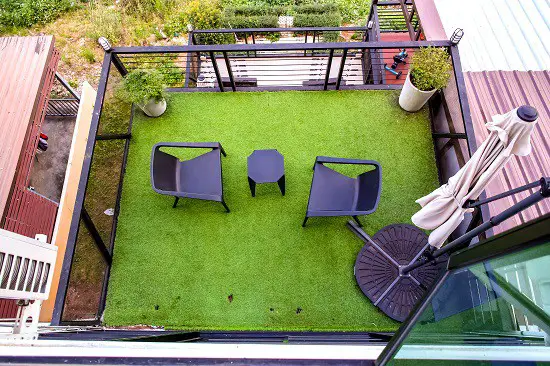
Which Grass Type Is Best Suited For A Balcony?
Not all grasses will be suitable for growing on a balcony. Where you stay geographically will make a difference, as well as the direction your balcony is facing, for example – North, South, East, or West.
Some grasses are best suited for colder areas, and some for more humid climates so here is a guide to choosing the best grass –
| North Region | South Region | Transition Area |
| Bluegrass | Centipede | Tall Fescue |
| Ryegrass – Perennial | St Augustine | Zoysia |
| Fescue | Bermuda Grass | |
| Tall Fescue |
You can plant shade-loving grass even if you stay in these geographical regions. Here are the best shade grasses or warm-season grasses for your balcony –
Centipede – Centipede grass is better suited to a full-sun balcony. However, it will tolerate full shade just as well. Centipede is light green and will do well on a semi-shaded balcony if it can get more than 5 hours of sunlight. The varieties to consider are –
- Tennessee Hardy
- Oaklawn
St. Augustine – St Augustine grass is coarse. It is widely accepted as the most shade-tolerant grass, making it a perfect choice for an enclosed or covered balcony.
It is a tough grass with wide blades, making it a good high-traffic zone cultivar. It easily adapts to soil types and can be grown in sandy areas with high drainage.
The best shade-tolerant varieties for a balcony in the St Augustine cultivar are –
- Palmetto
- Bitter blue
- Sapphire
- Seville
You can plant shade-loving grass even if you stay in these geographical regions. Here are the best shade grasses or cool-season grasses for your balcony –
Bluegrass – A few varieties of bluegrass can tolerate either full or partial shade. Bluegrass is self-repairing and durable, making it an excellent choice for high-traffic balconies.
The best varieties to choose from are –
- Kentucky Bluegrass
- Rough Bluegrass
- BenSun Bluegrass
- Glade Bluegrass
Of these varieties, the Rough Bluegrass is the most shade-resistant, while the Sabre prefers semi-shade or about 4 hours of dappled sunlight. The shade-loving bluegrass has characteristically blue-green narrow, flat, or folded leaves.
Ryegrass – Although the narrow-leafed ryegrass prefers full sun, it can tolerate a lot of shade. It would still need at least five hours of direct sun to maintain its glossy green color. The best choice for a balcony will be a perennial variety that lasts for 3 to 4 seasons.
Ryegrass is tough and durable in high-traffic areas. It should be perfect for a balcony that is busy and gets a lot of feet. You can mix ryegrass with other cultivars for more vigorous growth.
Mixing another cultivar with the perennial ryegrass will help it survive four to five growth cycles.
Fescue – Fescue is an excellent choice with its dark green and narrow leaves. It looks soft and velvety when cut and can tolerate a lot of shade. The finer the fescue variety, the more shade it can handle. The best types to consider are –
- Chewings
- Creeping Red
- Dwarf-type Tall fescue
- Turf-type Tall fescue
The fescue can manage dappled shade or semi-shade as well. Fescue grass is less hardy and not as tough as the bluegrass cultivars, so it’s an excellent choice for a secluded balcony. It will not have many people walking over.
The best grasses for a balcony in the transition area would be the following cultivars –
Tall Fescue – The tall fescue has a deep root system and performs well during a dry spell or heatwave. A balcony is more manageable than a yard, so watering can be controlled.
Bermuda Grass – Bermuda grass is prevalent in California and can withstand heat and dry spells. Using Bermuda on a balcony allows you to control the watering.
Zoysia – This cultivar is soft and thick with a medium green shade. It loves a bit of sun and can manage deep shade. The best varieties of Zoysia are –
- El Toro
- Cavalier
- Diamond
- Crowne

Conclusion
Not every balcony will be suited for natural grass. It may be more cost-effective and easy to lay down artificial grass or turf long-term. However or whatever you use, it is nice to have a green section if you have a balcony large enough, and grass creates that beautifully.





